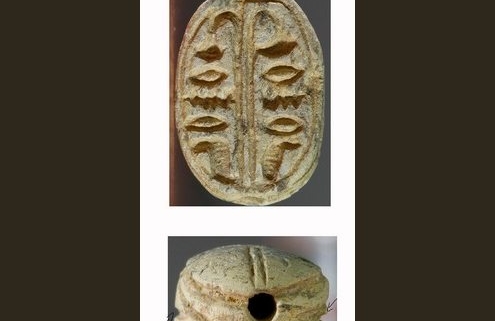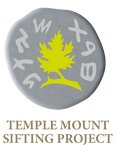
An soapstone (steatite) scarab with Egyptian hieroglyphs, 2nd millennium BCE. A perforated drill-hole allowed the scarab to be worn as an amulet or trinket.
Beetle-like scarabs are found throughout Canaan from the 20th century BCE onward, first brought in and used by Egyptian officials and local elites, with local intimations springing up soon afterwards.
Discover more from The Temple Mount Sifting Project
Subscribe to get the latest posts sent to your email.



